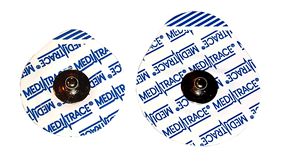



The electrocardiogram (ECG) is the recording on the body surface of the electrical activity generated by heart. It was originally observed by Waller in 1889 [1] using his pet bulldog as the signal source and the capillary electrometer as the recording device. In 1903, Einthoven [2] enhanced the technology by employing the string galvanometer as the recording device and using human subjects with a variety of cardiac abnormalities. Einthoven is chiefly responsible for introducing some concepts still in use today, including the labeling of the various waves, defining some of the standard recording sites using the arms and legs, and developing the first theoretical construct whereby the heart is modeled as a single timevarying dipole. We also owe the EKG acronym to Einthoven’s native Dutch language, where the root word cardio is spelled with a k. In order to record an ECG waveform, a differential recording between two points on the body are made. Traditionally, each differential recording is referred to as a lead. Einthoven defined three leads numbered with the Roman numerals I, II, and III. They are defined as where RA = right arm, LA = left arm, and LL = left leg. Because the body is assumed to be purely resistive at ECG frequencies, the four limbs can be thought of as wires attached to the torso. Hence lead I could be recorded from the respective shoulders without a loss of cardiac information. Note that these are not independent, and the following relationship holds: II = I + III.
Equipment: Data-acquisition system 32-differential channels and 8-isolated channels




PhD students:
Pedro Gomes (UM, sponsored by Univ. Lusíada)
Project Title:"Medical instrumentation system for cardiology"
Started in October 2004
Download: